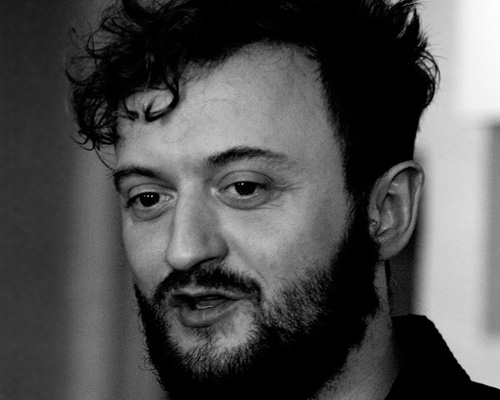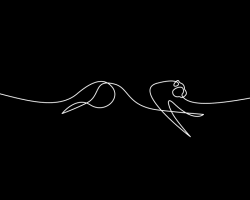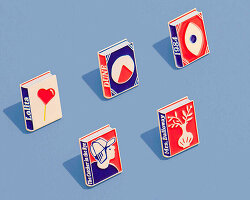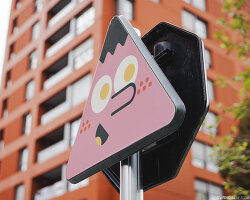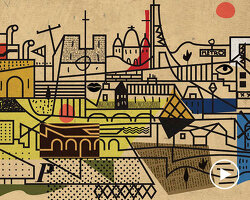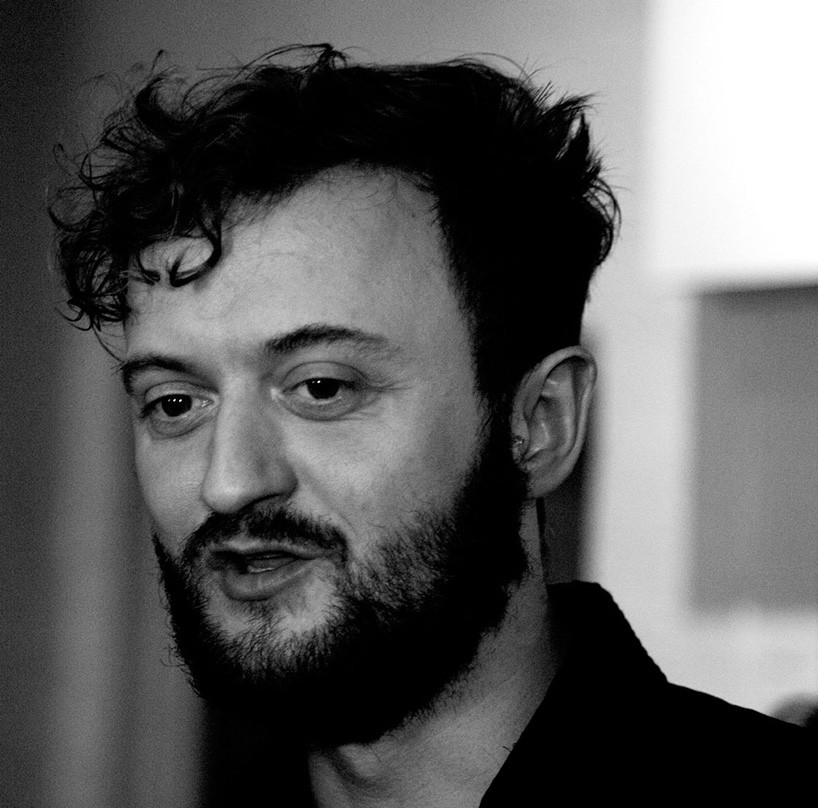
charles williams / made up
charles williams is an illustrator and designer based in london – working under the name made up. charles’s work is firmly rooted in drawing, and the use of geometric shapes, the continuous line, isometric grids, interconnected forms, and a surreal three-dimensional aesthetic. he told designboom more about his influences and creative process…
designboom: what originally made you want to become a graphic designer?
charles williams: when I was a kid, I used to think being a graphic designer sounded like a really cool job. I just really liked the way the 2 words sounded (and looked) together. I used to like drawing 3D letters, just using the shadows to show the 3D blocky forms. I like to pretend I’ve progressed beyond this early fixation, but we all know that’s not the case.
I didn’t ever really see myself becoming a designer; it just sort of happened naturally through trial and error. I was always fascinated by words – phonetics, phonology, semantics, etymology… so I studied linguistics at uni for a bit, then realised it wasn’t what I wanted to do at all (waaaay too hard) and went to art school instead, and in a roundabout way have ended up specialising in a different sort of ‘linguistic analysis’. I much prefer the visual approach. I focused on motion graphics at art school in liverpool but haven’t really made anything move since graduating, aside from some recent dallying with animated gifs. I like creating a sense of motion using a static image.
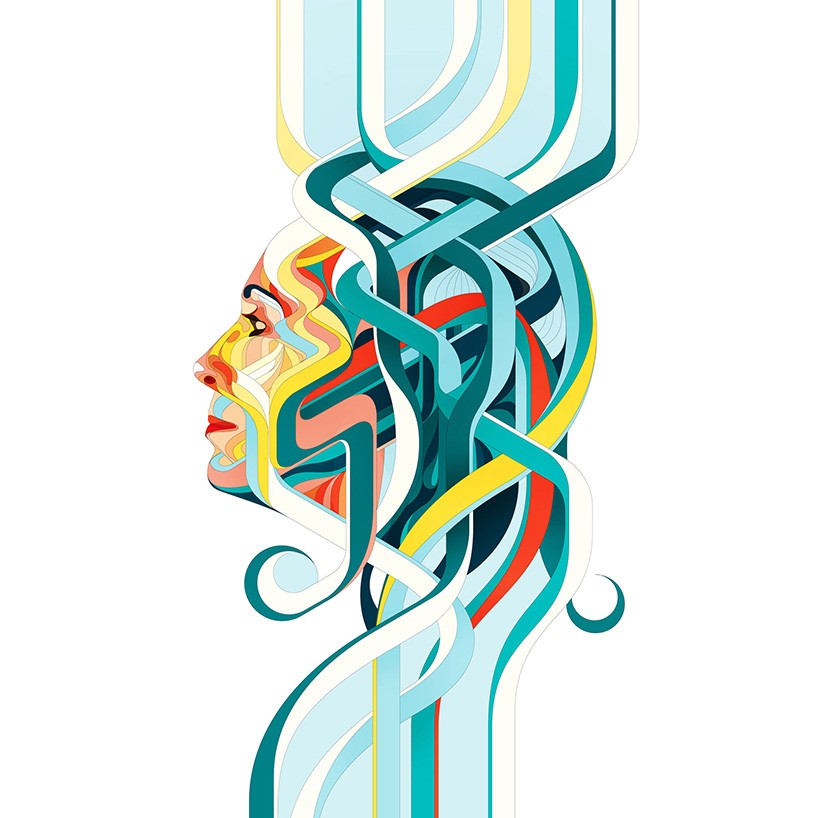
‘hillary’ for the washington post
DB: how would you describe your approach to design?
CW: multidisciplinary. I originally wanted to be an artist, but felt a bit unsure about where the reality of that might lead, so became a graphic designer instead. I’m aware that’s a massive cliché. I hold on to some artistic tendencies, despite their often being contradictory in ethos to that of a designer. the accepted wisdom is that as a designer, you are categorically not an artist – the two require diametrically opposing approaches – which I agree with, but then I am not strictly a graphic designer so I can do whatever the heck I want, damn it.
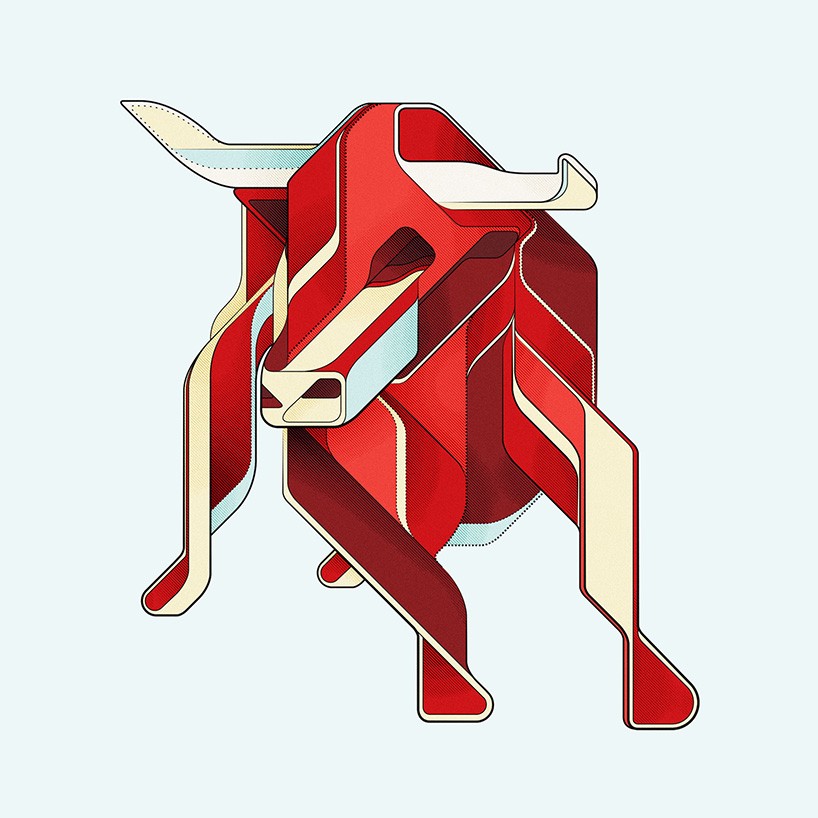
turning bull
DB: who or what has been the biggest single influence on your way of thinking?
CW: creatively speaking, music is a big influence, specifically of the electronic. repetitive, mind-expanding /destroying kind. as a one man band, music plays a big part in providing a welcome accompaniment to the sometimes monotonous rhythms of work. I think sound has inspired the sort of work I do quite a bit – perhaps tying in with the static-motion aspect.
the focus on type came about as a natural result of working with typography as a graphic designer, and feeling a developing urge to break it apart, toy with it, extrude it, and basically do more than my role as designer would allow. this led to a desire to explore a more artistic approach to type using the guise of ‘illustrator’. this open-ended approach has led to loads of interesting work – illustration, infographics, tactile sculptural work, animation, exhibition work, branding – in addition to typographic stuff.
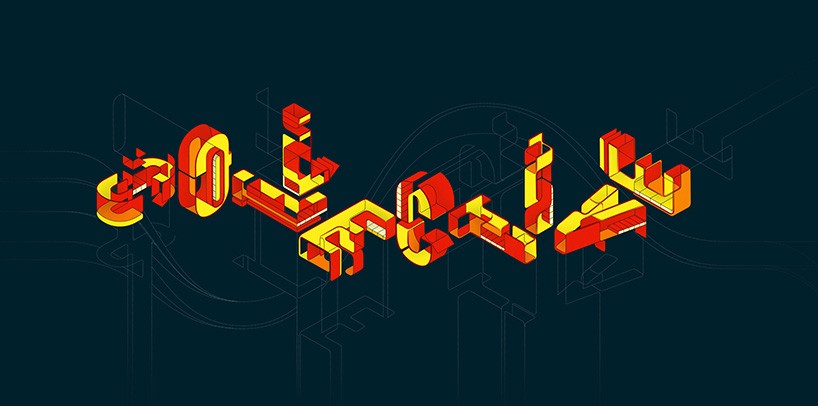
collective
DB: what would you say is your strongest skill and how have you honed that skill over the years?
CW: I think an eye for detail while being aware of the bigger picture. when the work is very complex as mine often is, you can – as I often did – get lost in the details of the work and when you come up for air, the work isn’t as powerful as you’d hoped, because the level of detail has a diluting effect on the overall impact. i’ve since focused on creating works that are bolder, predominantly through the use of lots of preparatory sketching. using drawing as a springboard for digital work is much more enjoyable too. I also love immersing myself in the fine-tuned epic craft of creating the vector work – you have to enjoy it, or you would lose your mind. there are moments.
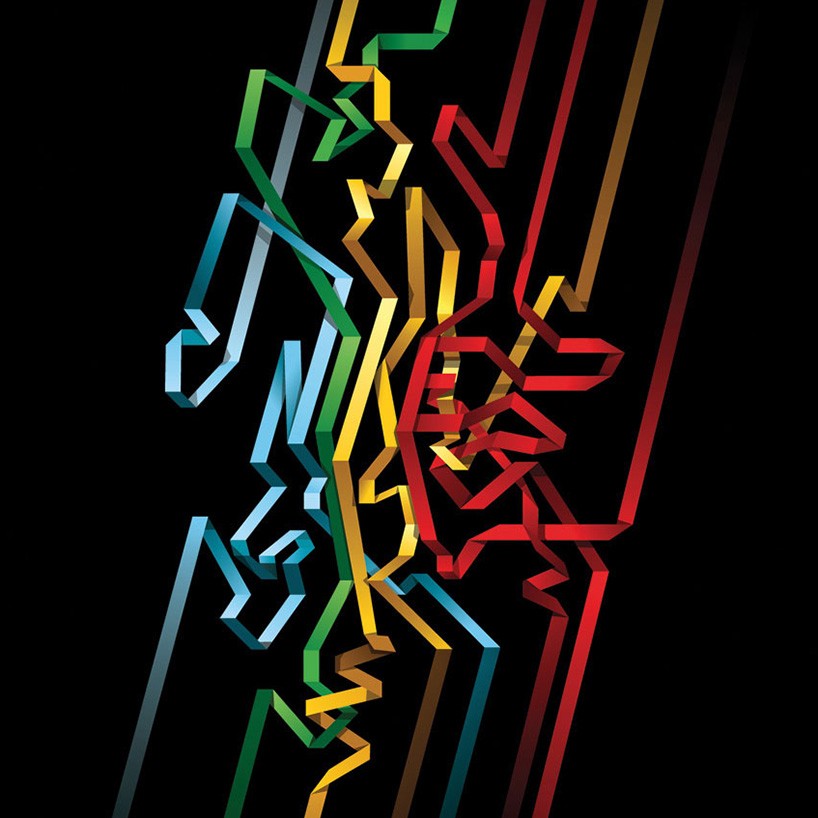
nike
DB: what type of brief or project do you enjoy working on the most and why?
CW: I love it when there’s that perfect balance between clear art direction from a client, and my own creative freedom. working within the confines of an intelligent brief is amazing! sometimes clients think us creative types like to have total freedom. nope. we need boundaries. like dogs. we’re like dogs. the best projects are collaborations between 2 creative minds, each complementing and challenging the other to create something (hopefully) unique, rather than just one person telling another person what to do.
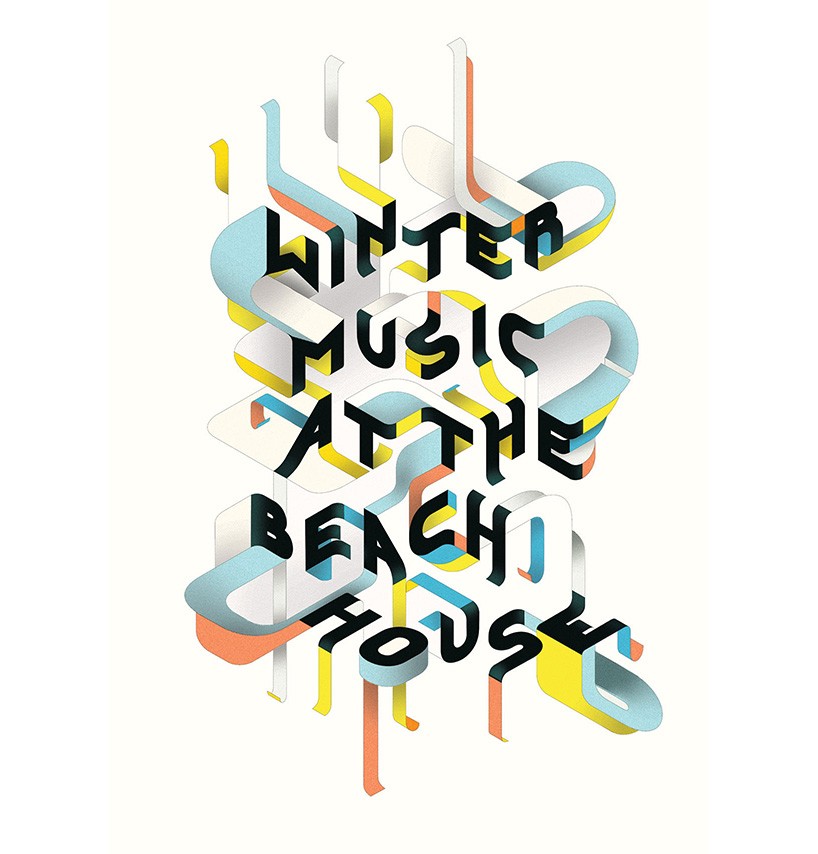
soho house winter music
DB: what are your thoughts on specialisation vs generalisation?
CW: it’s more important than ever to be multi-skilled. you have to be a creative director, an art director, a craftsman (or craftswoman), a marketeer, a copywriter, a web designer…but it’s most important to have a passion for what you are intrinsically trying to do, creatively, something underneath all the other stuff. I didn’t get into this so I could get really good at creating email campaigns, I got into it so I could solve creative problems with my own artistic ideas, but there’s not much point in creating good work if you don’t know how to shout about it. and vice versa.
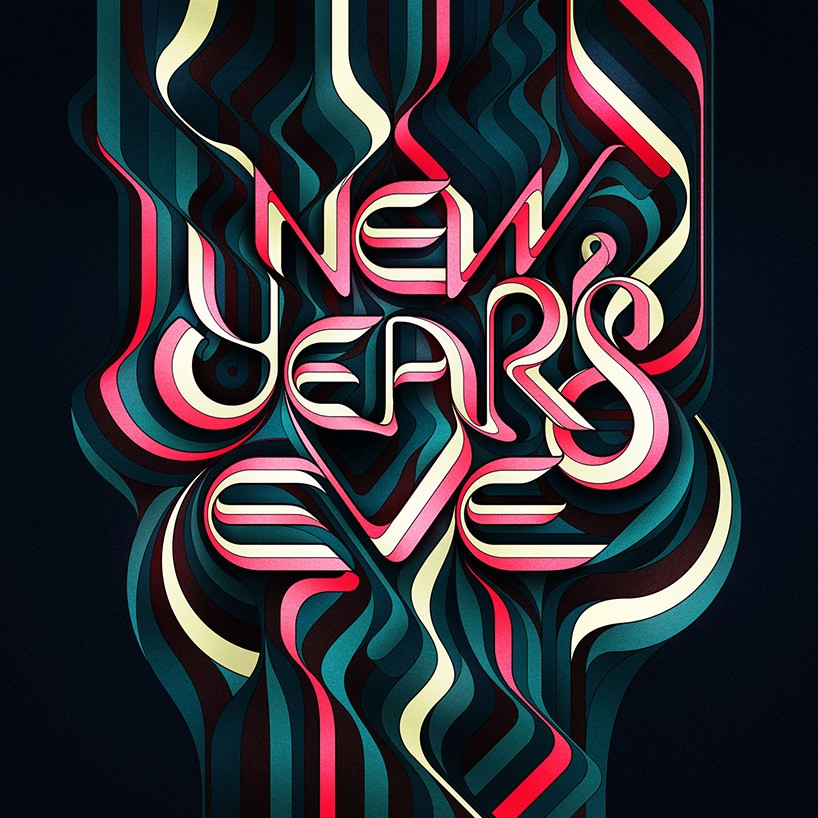
soho house new year’s eve
DB: as an illustrator how important is it to have a recognizable style?
CW: from an illustrator’s perspective, having your own style is obviously crucial, but as the boundaries between illustration, design and art become increasingly blurred, so do the rules that dictate how one has to work. I work in a certain way and can always see stylistic similarities between all my work, but this cohesiveness isn’t necessarily that apparent to others. which is fine – I like taking a designer’s approach to illustration as it means you’re always pushing things in new directions, while retaining some stylistic awareness of the wider body of work. I don’t have the discipline to apply the exact same stylings to every piece – same colorways, line work, shapes, depth etc. and am highly envious of those that do.
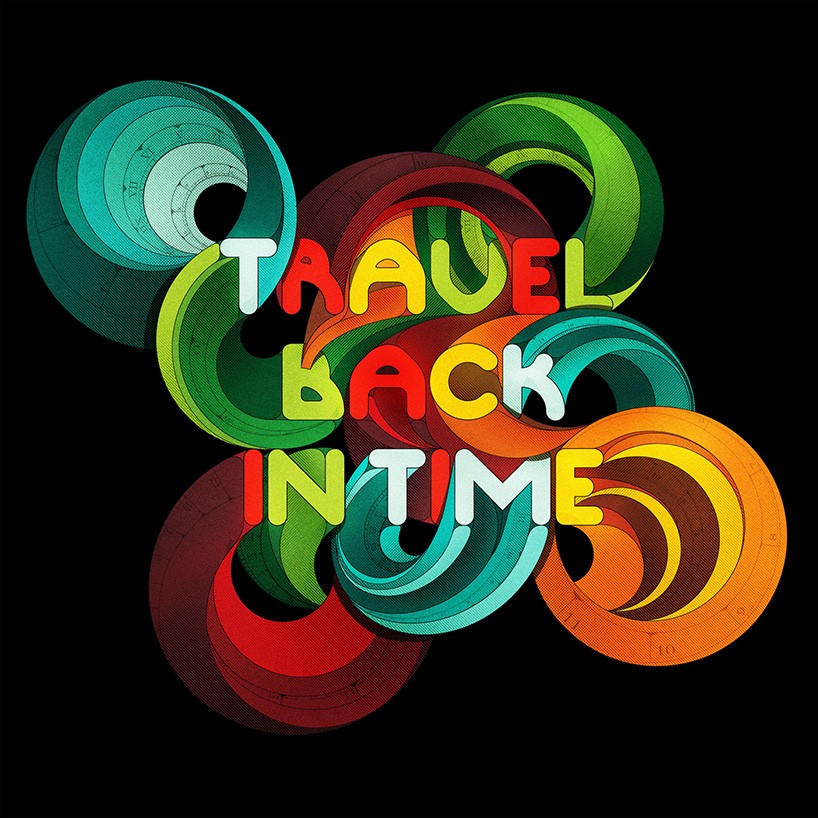
BBC travel time
DB: how do you think online design resources have influenced the graphic design being produced today?
CW: I suppose it means that the promulgation of ideas is much more rapid, so the creative community is in an ever increasing process of renewal, constantly looking at itself, and responding to each new development. which has always been the case – it’s just happening at a ridiculous speed now, and is only going to get faster and faster until one day it implodes and we go back to cave painting with yak blood.
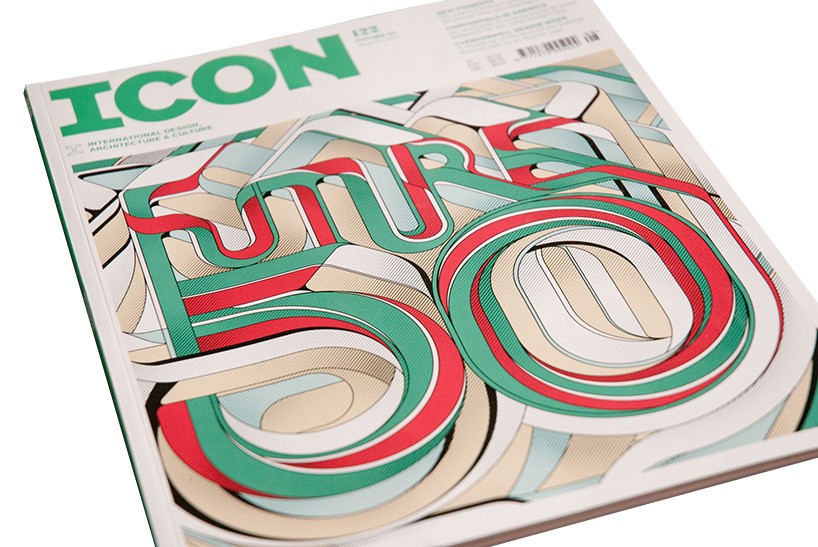
future 50 for ICON magazine
DB: what are you currently fascinated by and how is it feeding into your work?
CW: I’ve been fascinated for some time with the idea of representing invisible shapes (type usually) through interactions with other objects. I’m not sure why. I like exploring this visual idea in both digital and tactile, handmade work. I also really enjoy playing with undulating lines, using an isometric grid.
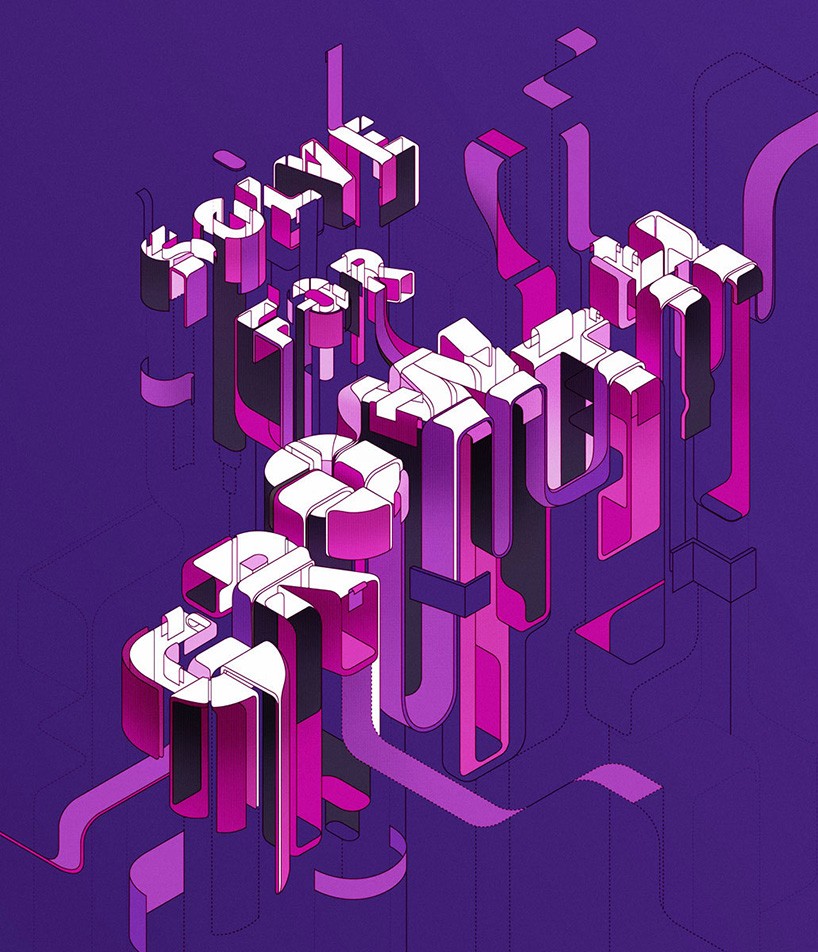
solve for growth
DB: what are you passionate about besides your work?
CW: cycling, coffee, music, politics, cooking, art, friends, family… the usual suspects.
DB: do you have any superstitious beliefs or rules that you live by?
CW: not that I’m aware of. I have to have a tidy desk and silence before I can think – that’s quite boring isn’t it!
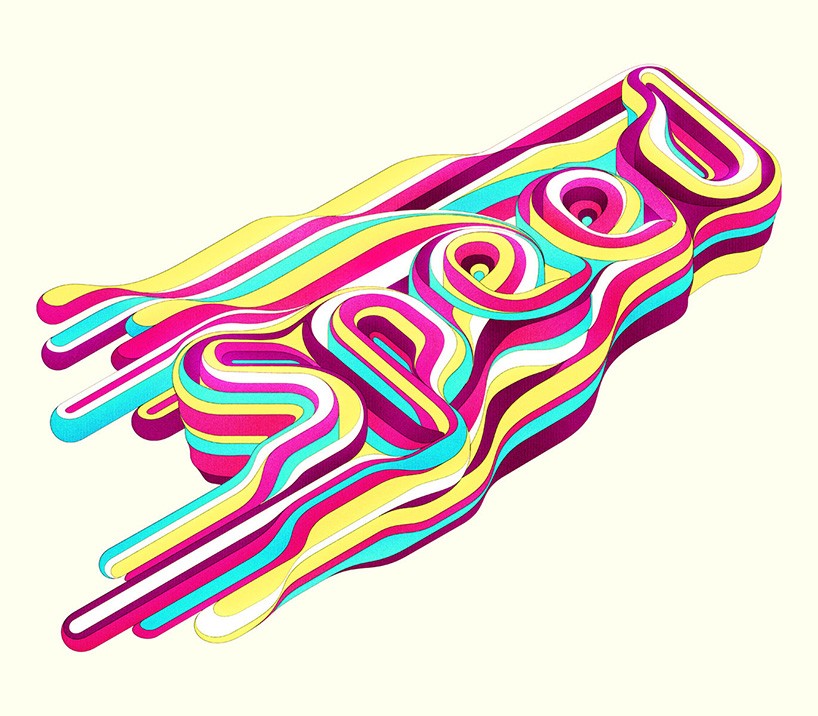
manual for speed
DB: what’s the best piece of advice you have heard and repeat to others?
CW: buy cheap, buy twice.
DB: what’s your personal motto?
CW: if at first you don’t succeed, maybe just accept it’s not for you and try something else.
